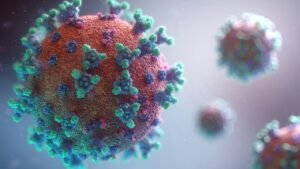Covid-19 cases are rising once more, particularly in Southeast Asia, with Hong Kong, Singapore, China, and Thailand witnessing a surge. The spike occurs more than five years after the WHO labeled Covid-19 a pandemic.
Although the global community has mostly adjusted to life after the pandemic, COVID-19 is not completely gone. A recent surge in infections throughout multiple Asian nations — such as Singapore, Hong Kong, and Thailand — has raised alarms among health officials. In India, the total number of active cases has also risen slightly. As of May 19, 2025, the Ministry of Health and Family Welfare reported 257 active cases in India.
Reports indicate that a new subvariant of Omicron is responsible for the recent increase in COVID-19 cases, reigniting worries about health and safety.
Why the sudden rise in cases?
The increase in COVID-19 cases is primarily fueled by a new subvariant known as JN.1 and its offspring, especially LF.7 and NB.1.8. All of these are associated with the Omicron lineage, which has been the predominant family of strains in circulation for more than two years. These newly identified subvariants are thought to transmit effectively, although the overall severity of illness is still quite low for the majority of individuals.

Another factor is the rise in international travel, enabling viruses to spread quickly across borders. The SARS-CoV-2 virus keeps experiencing genetic alterations, allowing it to bypass the immune defenses established against previous variants. These mutations facilitate the virus’s ability to re-enter the human body by evading existing immunity.
ALSO READ: Srikanth rolls back the years as he enters final of Malaysia Masters Badminton
Covid cases in India
According to health data analyst Krishna Prasad, the nation experienced a small increase in Covid cases in May, yet the number remained below 300, which is not alarming. Although 93 cases were documented in the week of May 5-12, the figure rose to 164 in the week of May 13-19. This week, one death was reported in Kerala. “In May, India had 257 cases and one death,” Prasad mentioned.
However, there is no reason to panic. Covid-19 is no longer the harmful danger it used to be. The seriousness of illness has greatly diminished since the arrival of the Omicron variant in late 2021.
The JN.1 Variant
The JN.1 variant was initially detected in the United States in September 2023, according to the US Centers for Disease Control and Prevention (CDC). It originates from the BA.2.86 variant, which is a subvariant of Omicron. The World Health Organization (WHO) has designated JN.1 as a “variant of interest,” indicating that it is under observation for its potential effects on public health.













